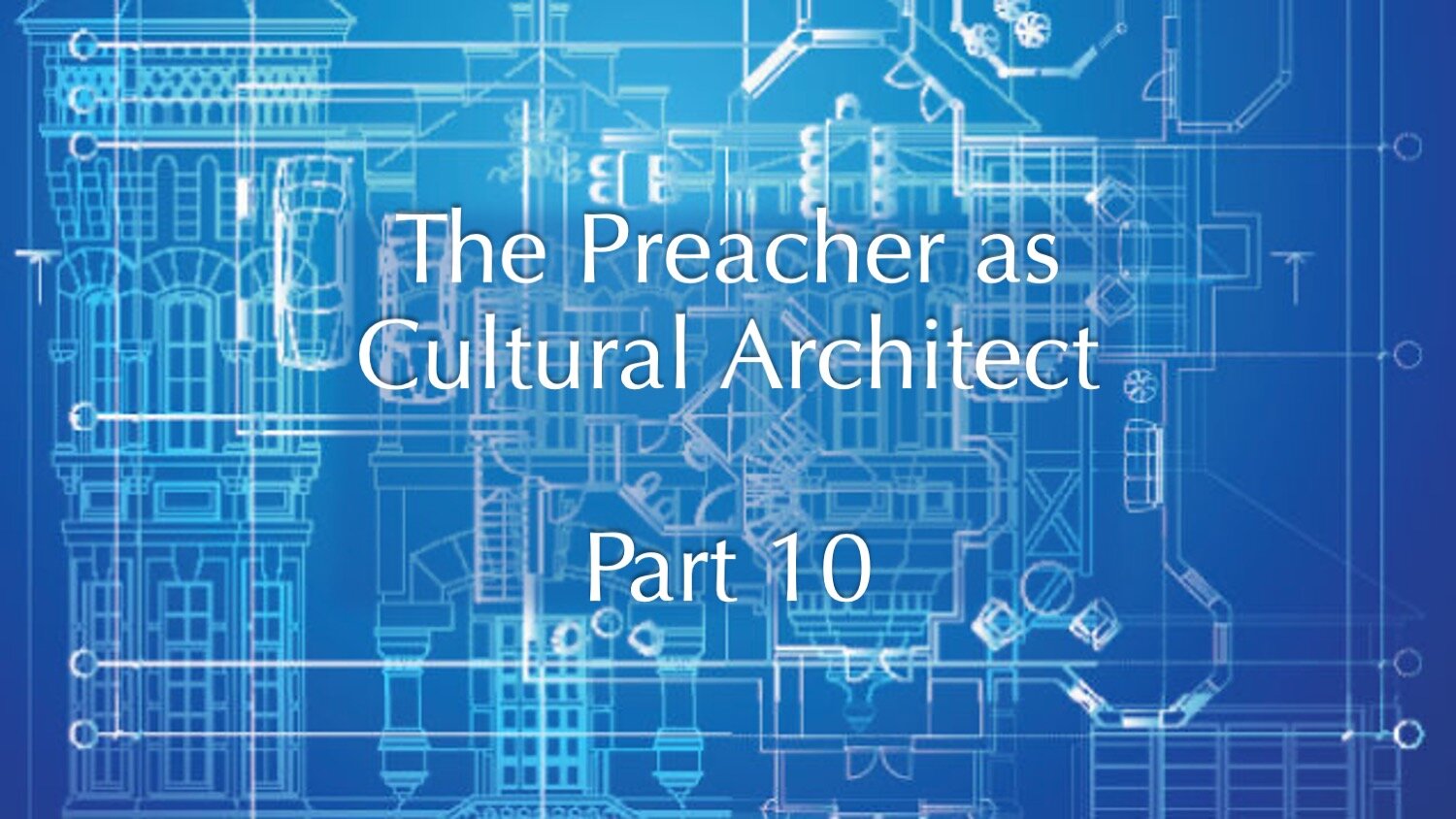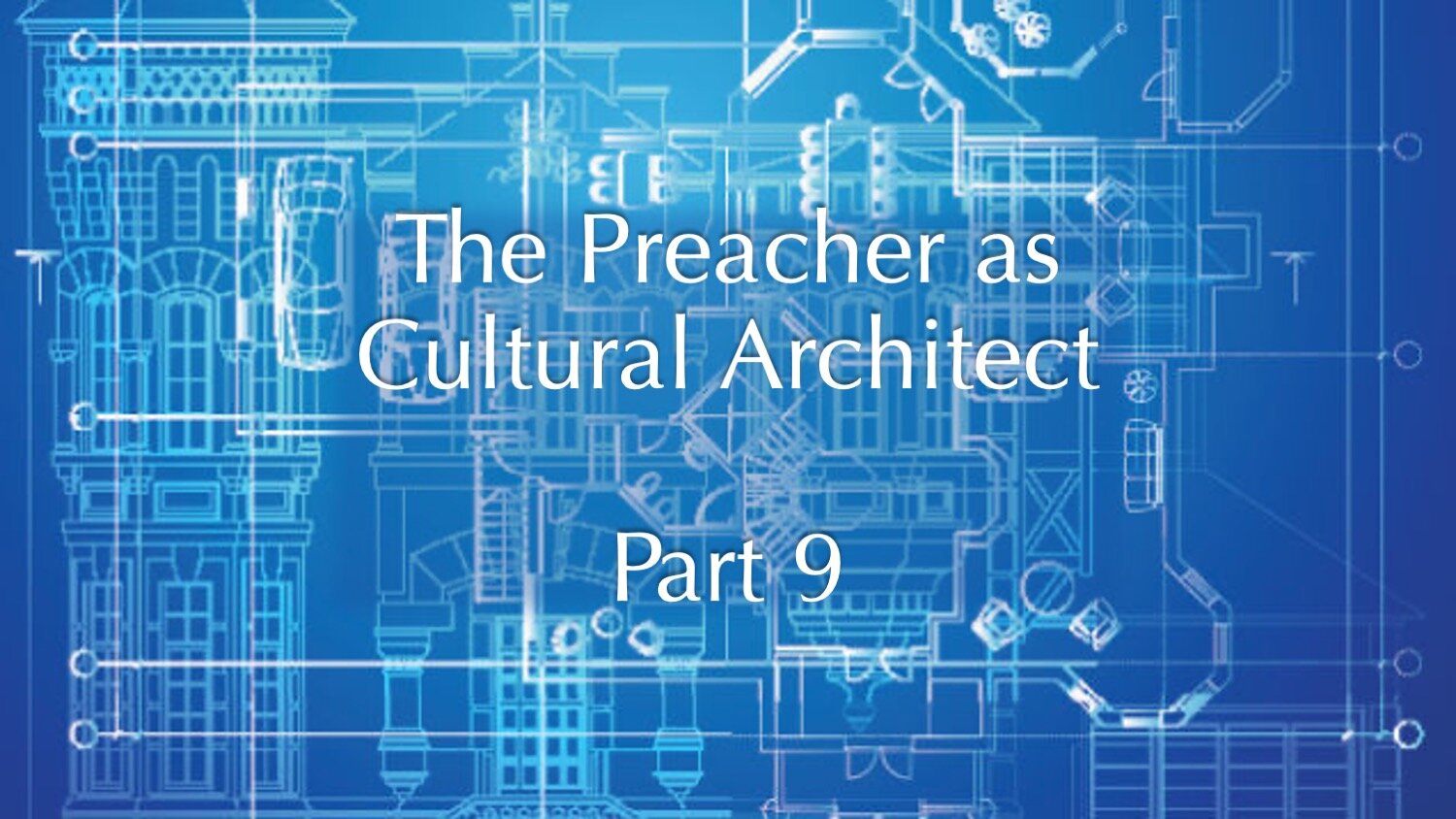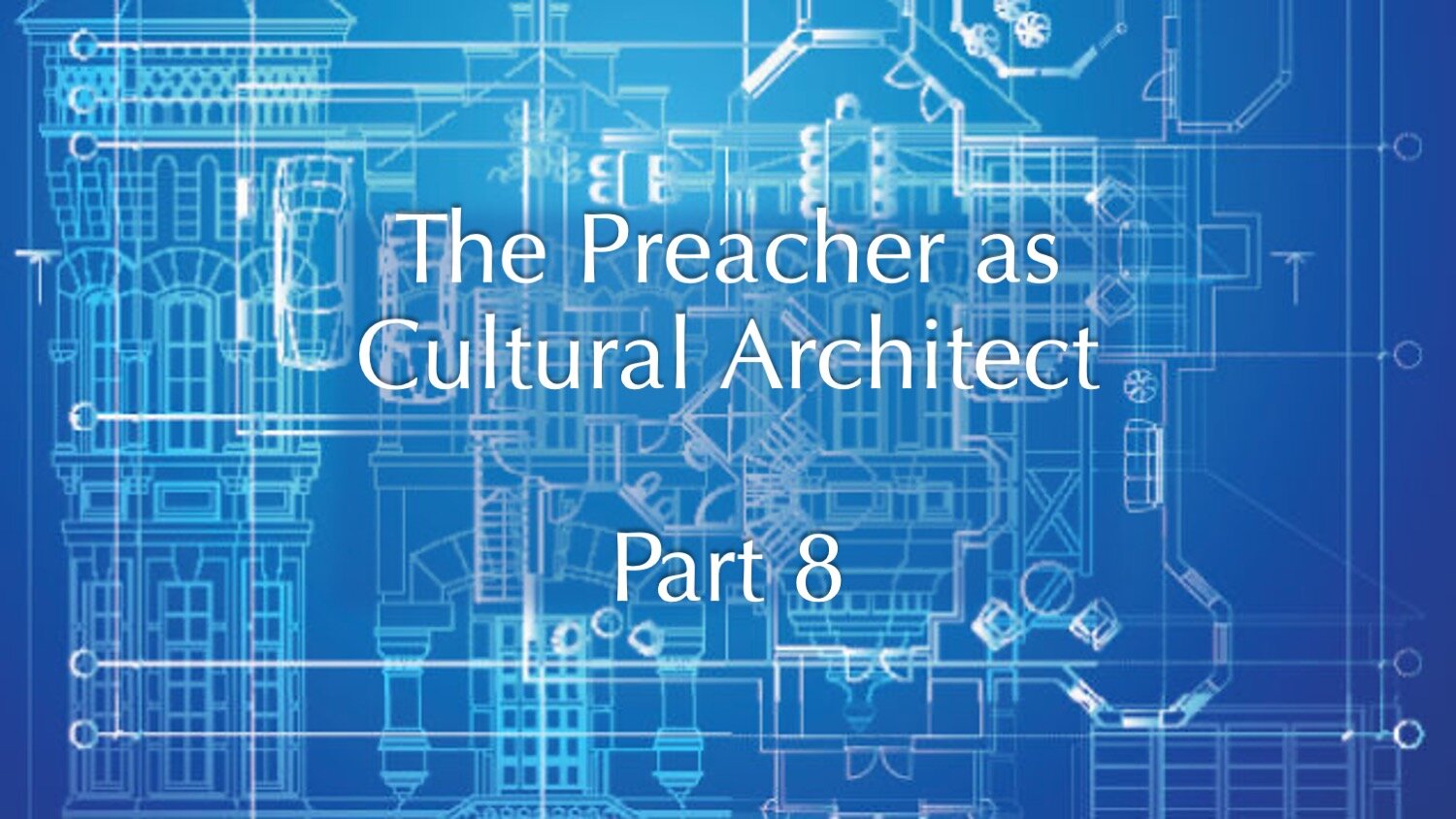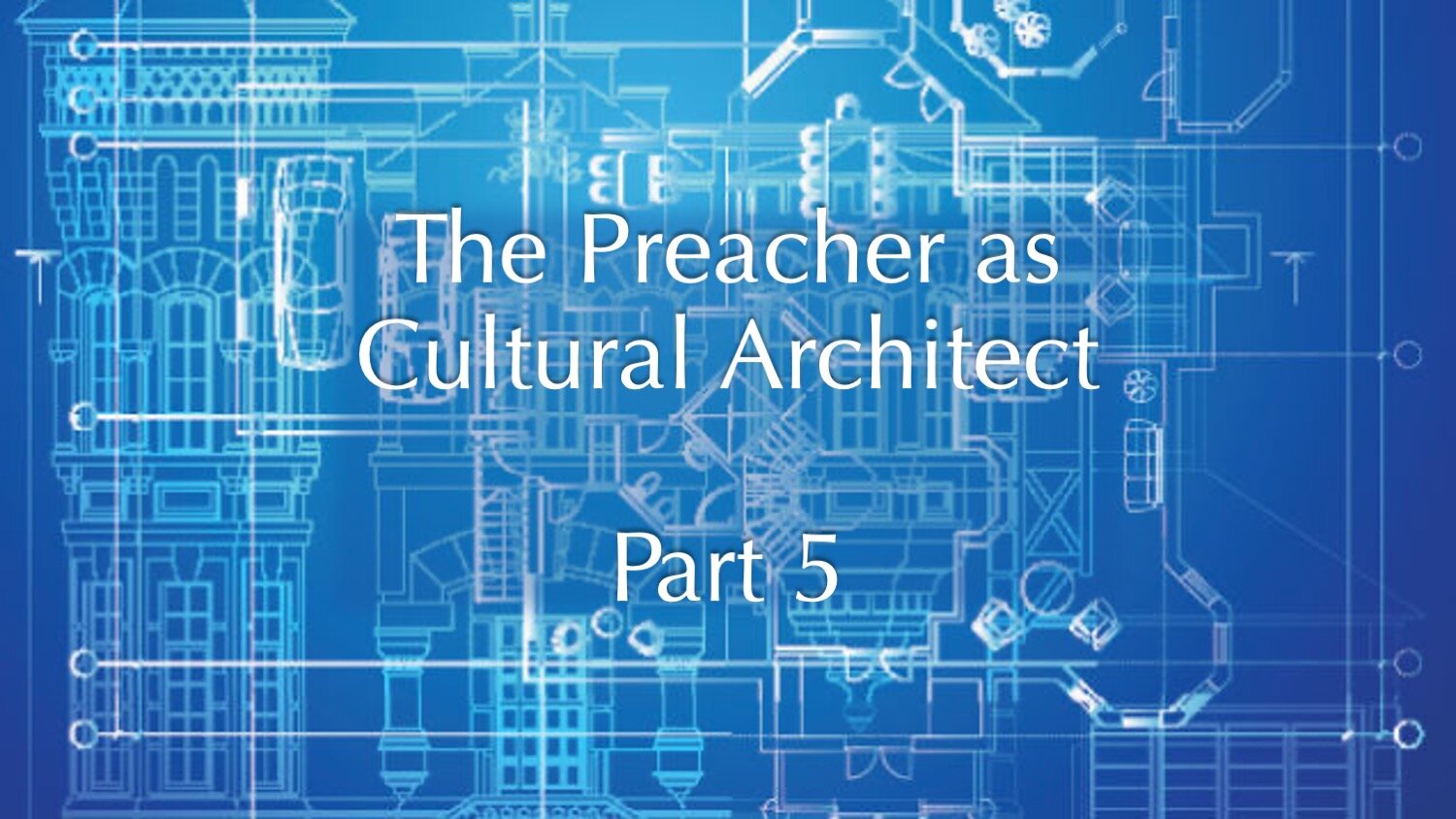
Conclusion: Preaching to Create Culture
I have attempted to explore an alternative to “warfare” as the paradigm for cultural engagement in preaching. My premise is that the church can have its most powerful impact on culture not by fighting it, ignoring it, or even merely conversing with it, but by presenting it with an alternative—a culture that embodies God’s truth in consistent practice. I contend that a key player in this process must be the preacher who intentionally and carefully constructs a culture that reflects truth both in its patterns of meaning and its strategies for action.

Word Study for Sermon Preparation
How do we address the problem of words? This is an ongoing and daunting challenge for anyone who wishes to preach the Scriptures faithfully. As with any other challenge in our path from text to sermon, it helps to have a process. Such a process is the subject of this post. Here are eight steps I have found helpful.

Preaching On Money, Part 4
Now we come to our third “Big Story” question regarding our relationship to the material world: How does Jesus redeem this area of our lives? How does the gospel change our perspective and our practice when it comes to money? Specifically, since we are searching for sermon “seeds,” we are interested in finding specific biblical passages that will help us answer this question.

Praxis: Our Way of Being in the World
While “praxis” may come last in our thought process and discussion of cultural architecture, it comes first in the perception of those who will observe and experience our culture. We have explored the significance of our story, our world view answers and our symbols, to ensure that our praxis stands on firm, coherent and consistent footing. We do this because the world that watches us reads the entire process in reverse, from practice to meaning.

Sample Analysis: Narrative
I have suggested a path towards analyzing the “structure” of a biblical narrative by focusing on setting, characters, and plot. Let’s try this out by analyzing a story that you may have never considered preaching a sermon from – the sordid tale of Judah and Tamar in Genesis 38. Our tendency might be to pass this one by as too steamy for a general audience, and maybe not even that important. It appears oddly inserted in the middle of the Joseph story as something of a detour that may be best ignored. Think again. On careful analysis, it may be one of the most important stories in this part of Genesis.

Meaning Made Visible: Symbols
Symbols embody the meaning of story and world view in a tangible way, making them visible in the life of a community. There is no culture without symbols, and preachers who would take on the task of cultural architecture must also explore and define the symbolic world of the culture in which they live, and the culture they wish to create.

Sample Analysis: Poetry
I have described the basic structure of Hebrew poetry as built around parallel couplets and triplets that are ultimately grouped into larger strophes to provide the overall logic of the poem. An outline of a poem begins with analyzing the smallest units (parallel lines) and expanding to the larger units (groupings of couplets and triplets into “strophes”). As an example, let’s analyze Psalm 46.

Frame: Worldview Questions
As we preachers talk about and practice our craft, we sometimes treat “story” and “precept” as mutually exclusive categories. As in, “are you a precept preacher or are you a storyteller?” But this is a false dichotomy. Jesus taught in parables, but he also made clear and concise declarations such as, “I am the way, the truth, and the life.” If we are to take seriously the task of cultural architecture, we need both story and precept.
The story must be told, and it must lead to precept.

Sample Analysis: Prose
Outlining a biblical text that comes to us in prose is a matter of identifying major ideas and discerning their relationships to one another, as well as discovering all the ways these ideas are described, dissected, and developed in the text. I suggested three steps to outlining such a text in a way that will make its structure clear and help us to communicate its logic effectively to our hearers.

Foundation: Story
At the foundation of any culture is a shared narrative. The story of God and his people that we have received in the Scriptures is, without question, the narrative upon which the culture of the church must stand. This story encompasses all human existence, from our pre-history to our final destiny. It offers a comprehensive and absolute way of understanding ourselves, the world, and ourselves in the world.

What Kind of Language? Outlining a Preaching Text
Most biblical texts fall into one of three broad language categories: Prose, Poetry, or Story. Though they often overlap in many ways, each of these communicates, challenges, and shapes us differently. In fact, like the three modes of transportation to Australia, they give us such different journeys that the perspectives they give of the same truth might seem widely divergent, even when the destination is the same.
In your preparation process, these differences become impossible to ignore the moment you begin to try to outline the meaning of the text. Let’s think about each of these language categories specifically from the perspective of how we would outline the text.

Jesus: Culture-Maker
Even as Jesus observed the traditions and habits of his received culture, he subverted it. In subtle ways, he planted an adjusted worldview in the minds and hearts of his followers, and undermined many of the cherished assumptions, as well as the political powers, of his society. This subversion, though subtle, was significant and apparent enough that it led to his death. It was also effective enough that the result was a distinct culture, a new community, that over the course of a few hundred years, in the face of persecution and poverty, proceeded to permeate and transform the collection of cultures known as the Roman Empire.

Andy Crouch: Why We Can’t Change the World
The conversation on Christianity and culture has been enriched and stimulated in recent years by the insights of Andy Crouch. In his book, Culture Making: Recovering our Creative Calling, Crouch has offered his own taxonomy of Christian responses to culture. He identifies four strategies for cultural change, based primarily on the record of American Evangelicals in the past century.

Preaching on Money, Part 3
When you calculate assets and liabilities, money in your pocket always belongs in the “asset” column, right? According to an accountant friend of mine, this is actually not always the case. The technical term for money that is a liability is “unearned asset.” When a person or business receives payment for services that they have not yet rendered, those funds must be counted as a liability.
A “big story” sermon series first asks the question, “What is God’s purpose?” The next question is, “How has sin mucked it up?” God has given us money as an asset. Sin has made it a liability.

What Kind of Literature?
True fishermen never stop looking for just the right combination of bait and technique to catch a fish in any given pond or stream. Lure, minnow, worms or stink bait? Spinner, jig, or fly? They study fish and habitats endlessly, to make the best possible choices, and increase their chances of catching the “big one.”
I’m no fisherman, but I think I understand their drive. As a preacher, I’m always looking for the “big one” — the big idea of a given passage. But each passage is unique, and it swims in a particular pond or stream. Different kinds of texts work differently and communicate their truths in distinctive ways. If I am to coax the right truth consistently out of every text, I must learn to read each text according to its own rules. Like a fisherman who never stops studying fish and habitats, a preacher must make a life-long endeavour of studying literary genres and forms.

Think Like a Missionary
In the interests of full disclosure, I should acknowledge that my missionary vocation and experience profoundly influence how I think about preaching and culture. I spent my teen years as a missionary kid in Central America. I have spent most of my adult life as a cross-cultural missionary as well. By default, I tend to think like a missionary.
“Thinking like a missionary” will kill any tendency to see culture as a monolithic beast to slay.

Preaching on Money, Part 2
Preaching a “Big Story” series on money will naturally begin with God’s purpose for our relationship to the material world. Once we understand this, we are more prepared to understand how this relationship has been affected by sin, and how Christ has redeemed it. Here is a list of texts and ideas that could help us tell the story of money.

Examine the Text
Once you have chosen a text and gotten the big picture of the story around the text and the story behind the text, it’s time to have your own dialogue with the text. Resist the temptation to jump right into the verse by verse discussion in your favorite commentary, or listen to a sermon from your favorite preacher on the same passage. This will only give you second-hand information. You need to have your own conversation, your own encounter.

Moving Beyond “Christ and Culture”
You would be hard pressed to find a major discussion about Christianity and culture in the second half of the Twentieth Century that does not reference the work of ethicist H. Richard Niebuhr. His book Christ and Culture, published in 1951, defined the conversation for a generation. The book had wide and lasting influence for at least two reasons. First, it addressed a topic that many Christian thinkers considered to be of utmost importance. Second, it provided clear and satisfying handles for talking about ways Christians might respond to culture.

Preaching on Money, Part I
As a young pastor, I was reluctant to preach about money. At the time, however, I knew several older preachers who relished any opportunity to tackle the subject. I wondered why this was so. Did they just not care who they offended? Were they jaded to the financial demands on their hearers? Did they just not know that they ran the risk of feeding the “money-grabbing-preacher” stereotype that already existed in peoples’ minds?
Now that I’m an older preacher, I think I understand. The longer I live, the more I realize that the only thing that really matters in my ministry is to make disciples. And the longer I try to make disciples, the more clear it becomes that how we use our money is the truest measure of our discipleship, because it reveals where our treasure really is.

